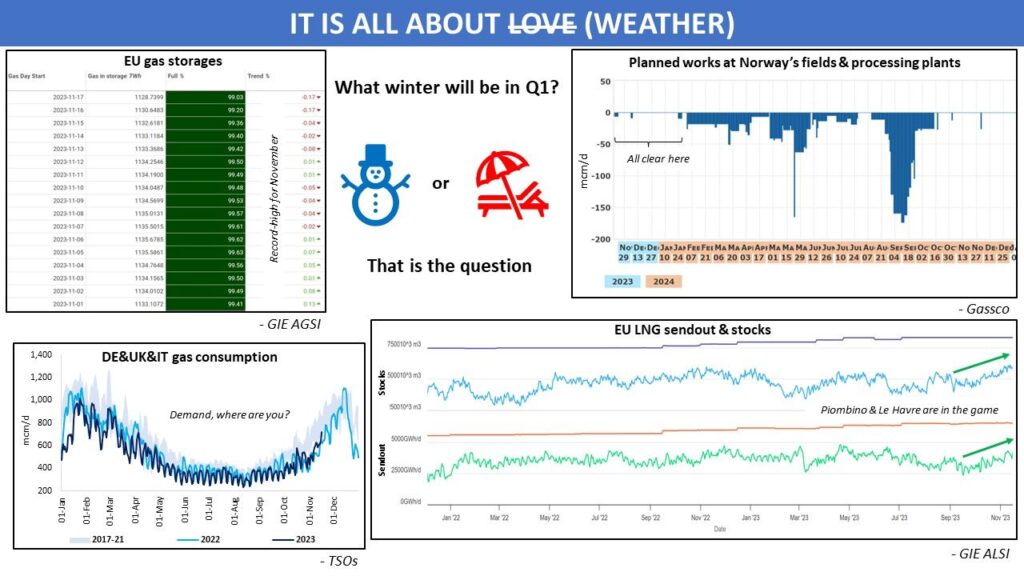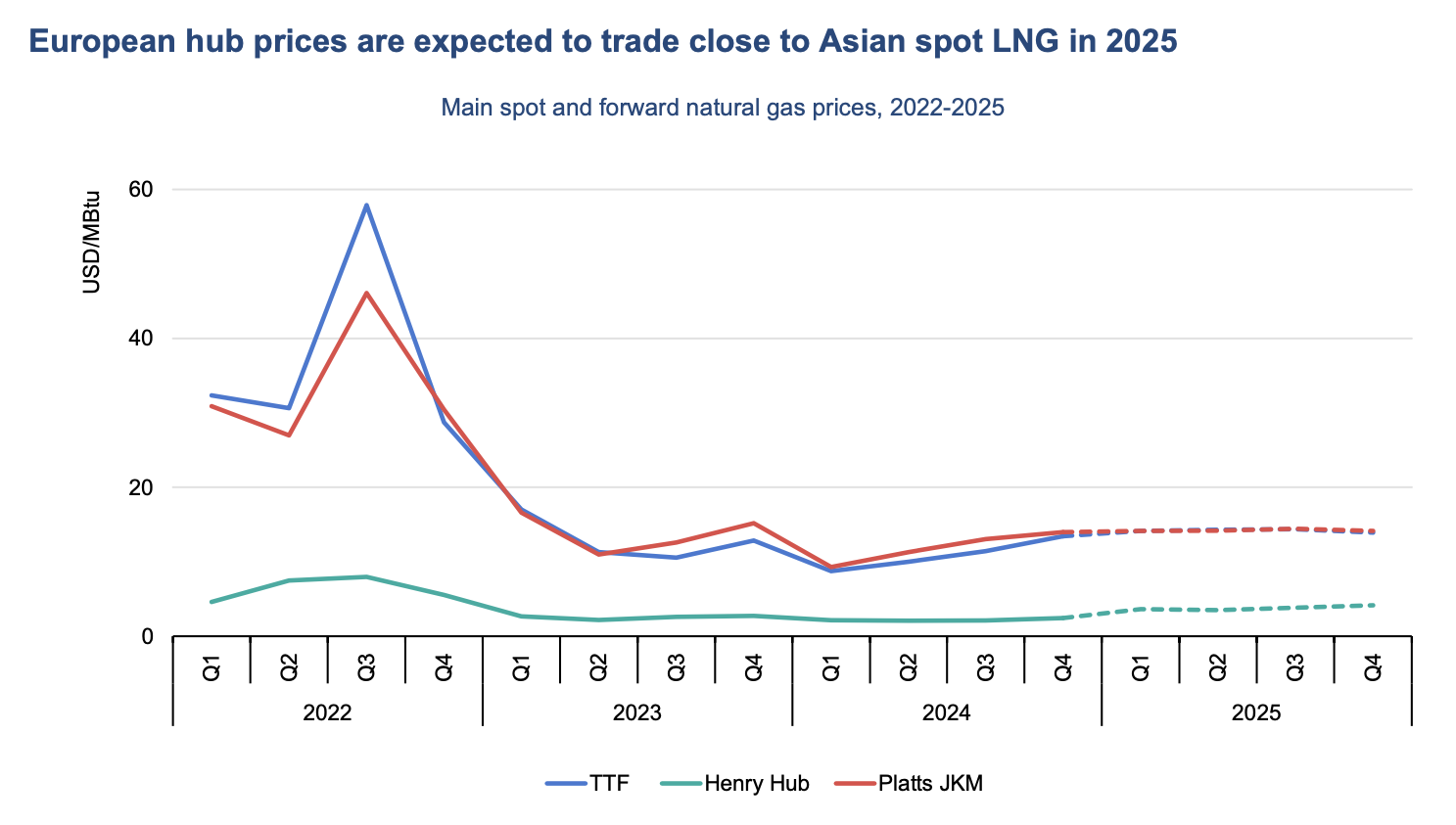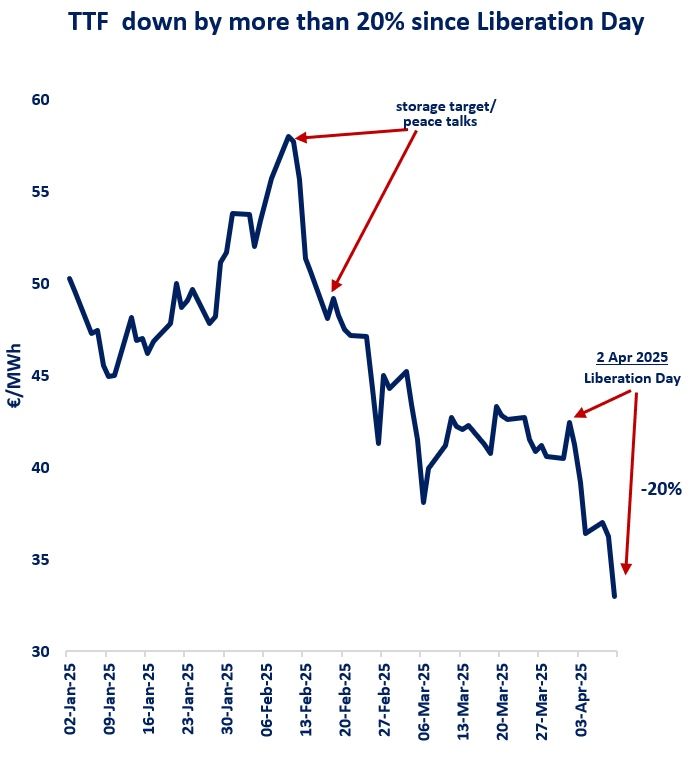

Fundamentally, the European gas market currently resembles a party where each part of it is organised really well and promises a relaxing time for those attending it.
Indeed, this winter party has enough ‘drinks’. After a heavy maintenance season in Q3, Norwegian pipeline flows are now close to full capacity with practically no works scheduled at the country’s production fields or processing plants until early February.
Imports from Algeria and Azerbaijan have also not let the continent down so far, while the former can even add to supply if needed.
There is no shortage of ‘food’ at the party either. In mid-November, total LNG sendout from Europe’s regas sites reached the level last seen in June, supported by a new French FSRU starting commercial operations as well as Italy seeing regular imports through its Piombino facility.
Decent inventories at the LNG terminals across both Europe and Asia-Pacific are just helping guests to preserve the festive mood throughout the party.
Also, it is not overcrowded at all. Since the start of winter, demand for gas in European countries has remained weak despite a bit of addition from industrial consumption. In fact, all three parts of it – rescom, power and industry – continue to be noticeably below multi-year averages.
As a result, the party is far from being over with underground storages across Europe holding at an all-time high of around 99%, or ~105 bcm. On top of that, the Ukrainian sites have another ~3 bcm of European players’ gas, adding to supply flexibility during the coldest winter months.
However, even the coolest party can easily go wrong or even be ruined if a surprise guest decides to arrive. While there are many things that can affect balances, including geopolitics or disruption to one of supply routes, winter’s weather is the biggest factor of influence possible.
Everyone knows about it but to be ready for the arrival of colder weather, especially when it stays for a long time, is always a challenge for party guests. It is the question whether it comes or not, and each year the answer to it defines what the party will look like.
Source: Yakov Grabar (LinkedIn)













